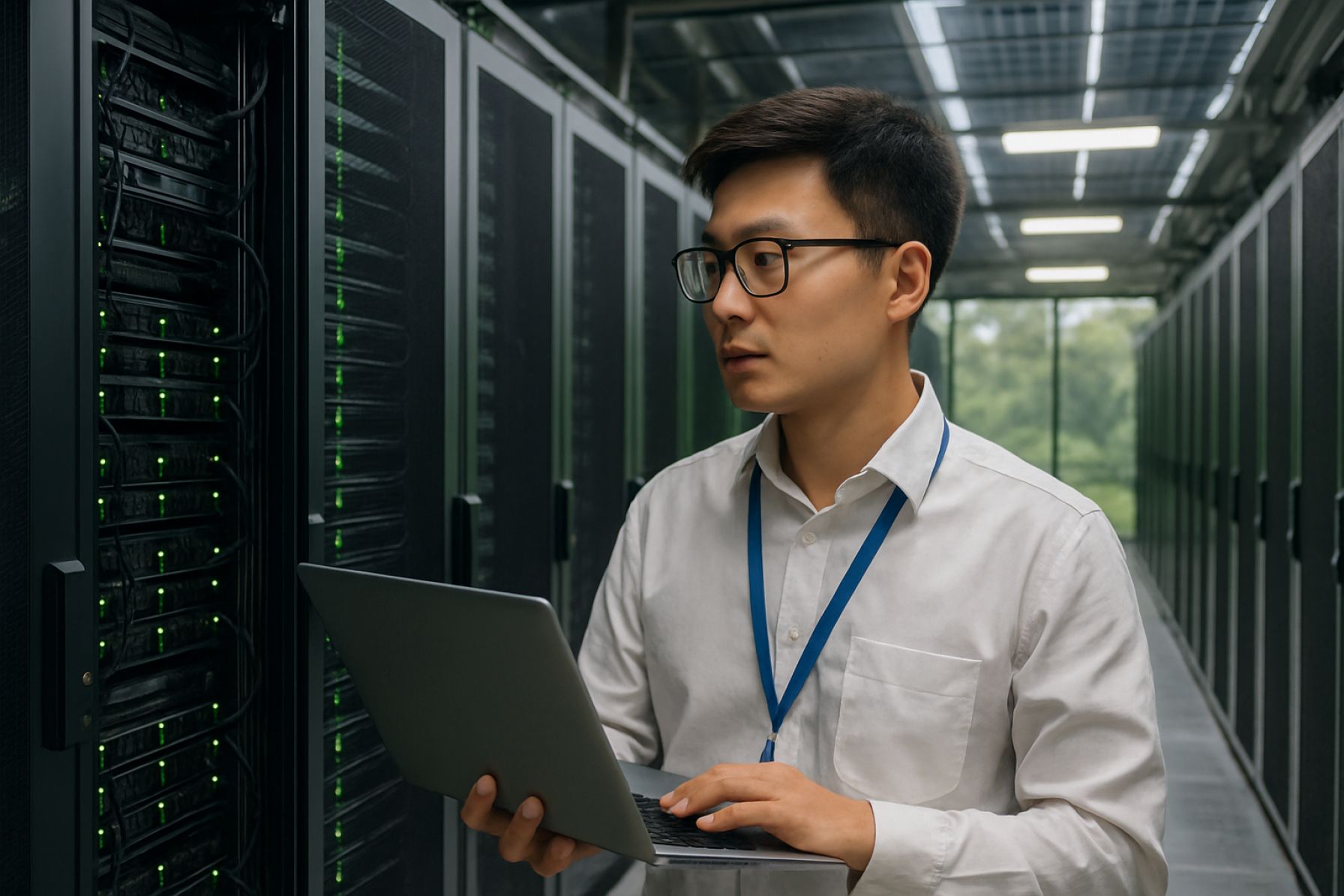China Unveils Aggressive Blueprint to Power Its AI Boom With Cleaner, Smarter Data Centers
China is harnessing renewable energy and advanced tech to control the massive power surge from its expanding AI and data center industry in 2025.
- 43%: Projected growth in AI-computing power demand by 2025 (IDC)
- 3: Key provinces targeted for green data center expansion: Qinghai, Xinjiang, Heilongjiang
- 1000s: New AI applications and users fueling data center expansion
China is ramping up efforts to secure its place at the forefront of global artificial intelligence by investing heavily in the backbone of the AI revolution: state-of-the-art data centers powered by clean, renewable energy.
Under a sweeping new action plan released in Beijing this week, Chinese officials pledged to closely align the growth of power-hungry data centers with the nation’s evolving energy strategy. The goal? To meet the explosive electricity demands of next-generation supercomputing while reducing environmental impact.
What’s Driving China’s Data Center Power Surge?
The rapid evolution of AI, especially home-grown models like DeepSeek, has ignited an unprecedented demand for high-performance computing facilities across China. According to research cited by the International Data Corporation (IDC), China’s AI computing power demand could climb a staggering 43% in 2025—outpacing global averages.
From social media algorithms and medical research breakthroughs to sweeping government digitalization, AI applications are multiplying at record rates. This boom is turning massive data centers into the engines of China’s economic growth—and into major electricity consumers.
How Is China Powering AI Data Centers Sustainably?
The action plan centers on bringing together advanced data center development and renewable energy infrastructure in regions teeming with green power—namely Qinghai, Xinjiang, and Heilongjiang. These provinces are rich in solar, wind, and hydro resources, making them ideal for low-carbon facilities.
To handle surging loads and avoid straining local grids, China’s National Energy Administration will deploy AI-driven forecasting technologies. These systems predict electricity consumption and renewable output in real time, helping data centers tap into green electricity flexibly—and cost-effectively—during peak hours.
Q&A: China’s Clean AI Data Center Push—What Does It Mean for 2025?
Q: Why focus on non-hub regions for data centers?
A: Placing data centers in resource-rich, less populated regions lets China tap into abundant green energy while avoiding overcrowding and grid strain in major cities.
Q: How will smaller tech firms benefit?
A: The Ministry of Industry and Information Technology stressed support for niche and emerging AI startups, ensuring innovation isn’t limited to tech giants alone.
Q: What global impact will this AI and green energy integration have?
A: If successful, China could rewrite the playbook for sustainable digital infrastructure—a model to watch for countries racing to balance AI growth with climate commitments.
How Can Other Countries Learn From China’s AI Energy Strategy?
Experts say combining high-tech forecasting tools with strategic placement of green-powered data centers could set a global standard. Regions like Northern Europe and the western U.S. are also exploring renewable-driven data clusters, echoing China’s ambitious approach.
For more on tech and green energy, visit Bloomberg and Reuters.
What’s Next for China’s AI Data Center Ambitions?
China’s commitment to powering the AI era with cleaner energy is more than a bold statement—it’s a strategy with planet-wide implications. As AI continues to drive economic dynamism, the eyes of the world are on China’s ability to manage energy use without sacrificing growth.
Stay ahead of AI and green energy trends—follow the innovators shaping a smarter, cleaner digital future!
- Track AI power demands and sustainability metrics
- Watch for policy updates from China’s energy and tech authorities
- Explore renewable infrastructure investments in major tech regions
- Support the shift towards smarter, more eco-friendly computing worldwide









